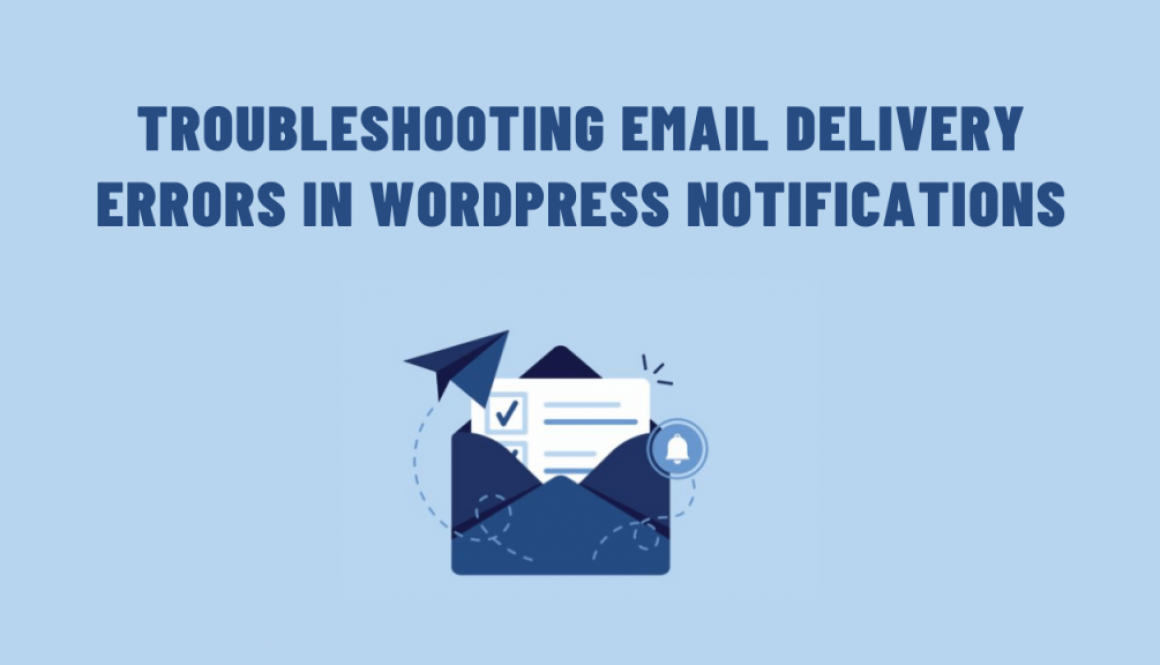Troubleshooting Email Delivery Errors in WordPress Notifications
Communication remains a cornerstone, and for WordPress website owners, ensuring that email notifications reliably reach their audience is vital. However, encountering email delivery errors within WordPress can be frustrating and impact user engagement. Let’s explore common issues and solutions to resolve these notification errors effectively.
Identifying Email Delivery Errors
- No Emails Sent: Sometimes, WordPress fails to send any emails. Then, leaving the users in the dark about important updates or communication.
- Emails in Spam/Junk: Your WordPress notifications might end up in the recipient’s spam or junk folder, reducing their visibility and impact.
- Failed Delivery Notifications: Occasional error messages indicating delivery failures can point to underlying issues needing attention.
Causes of Email Delivery Errors
- Misconfigured Email Settings: Incorrectly set email configurations within WordPress or hosting providers can hinder email delivery.
- SPAM Filters: Overly strict spam filters might mark legitimate WordPress notifications as spam, causing delivery issues.
- Server-Related Problems: Server misconfigurations or limitations can prevent emails from being sent.
Solutions for WordPress Email Delivery Issues
- Use SMTP to Send Emails: WordPress default mail function might not be reliable. So, implement an SMTP plugin like “WP Mail SMTP” to send emails through a proper mail server.
- Correct Email Settings: Ensure accurate email settings in WordPress. Then, access WordPress Dashboard -> Settings -> General. After that, verify the ‘WordPress Address (URL)’ and ‘Site Address (URL)’ fields.
- SPF and DKIM Records: Set up SPF (Sender Policy Framework) and DKIM (DomainKeys Identified Mail) records to authenticate your emails. Thus, WordPress reduces the chances of being marked as spam.
- Check Hosting Server Limits: Confirm with your hosting provider if there are any restrictions on outgoing emails. However, if there’s an issue with the server configuration.
Code Samples
For those comfortable with code modifications, here are some snippets that might come in handy:
SMTP Configuration in WordPress
// Example configuration using WP Mail SMTP plugin
define( ‘WPMS_ON’, true );
define( ‘WPMS_SMTP_PASS’, ‘your_smtp_password’ );
define( ‘WPMS_SMTP_HOST’, ‘your_smtp_host’ );
define( ‘WPMS_SMTP_PORT’, ‘your_smtp_port’ );
define( ‘WPMS_SSL’, ‘your_smtp_encryption’ );
Adding SPF and DKIM Records
SPF Record:
example.com. IN TXT “v=spf1 include:spf.yourhost.com ~all”
DKIM Record:
default._domainkey.example.com. IN TXT “v=DKIM1; k=rsa; p=MIGfMA0GCSqGSIb3DQEBAQUAA4GNADCBiQKBgQC…”
In conclusion, efficient communication through email notifications is essential for WordPress websites. By understanding the causes of email delivery errors and applying the suggested solutions, you can significantly improve the reliability of your WordPress notifications, ensuring your messages reach the intended audience effectively.

